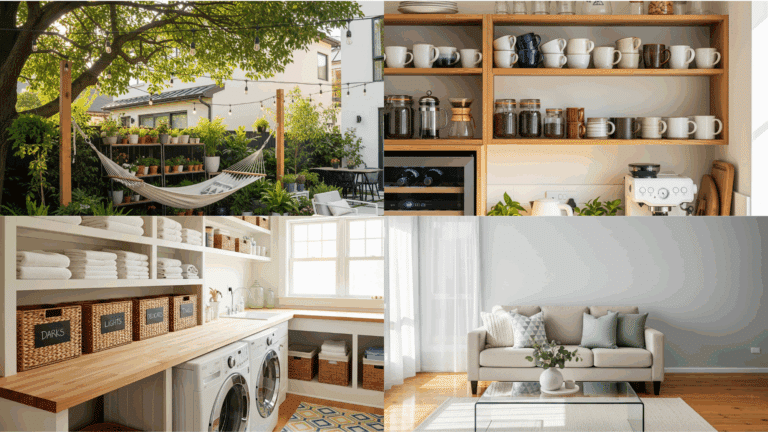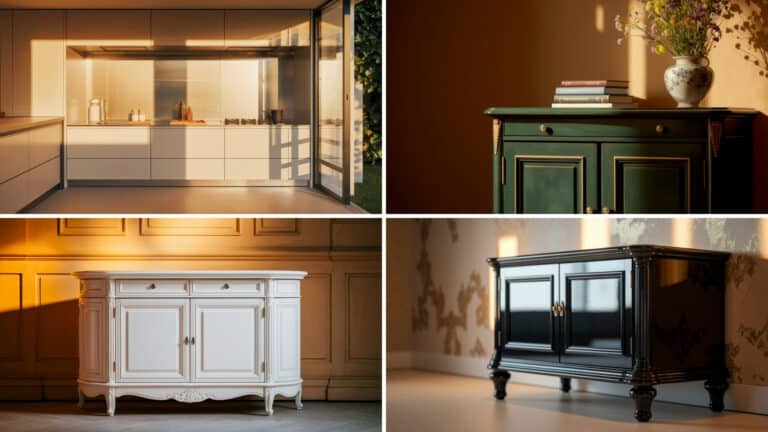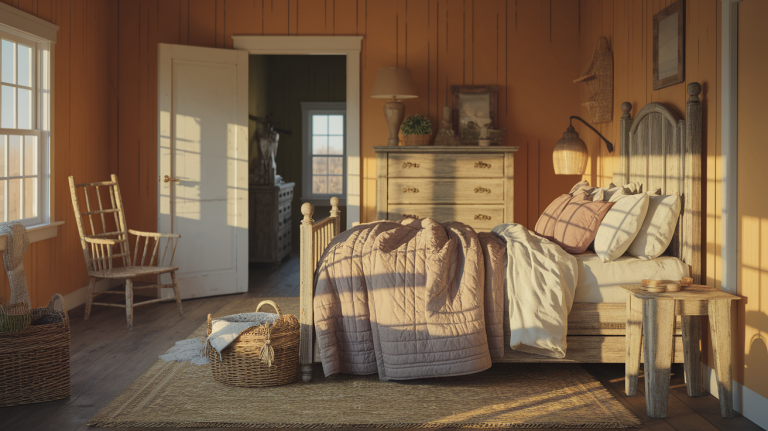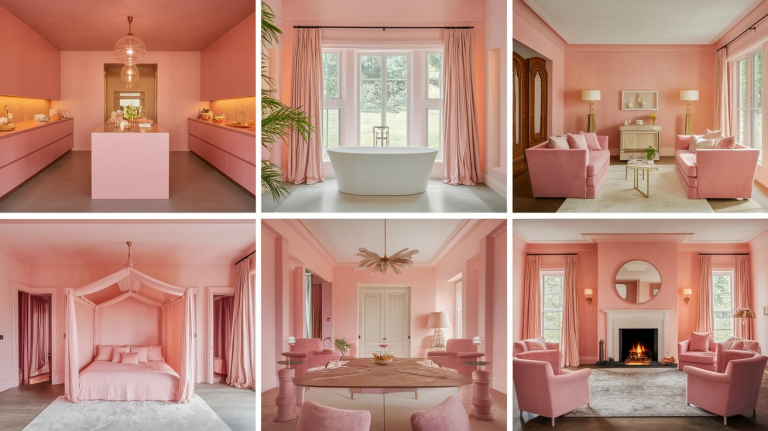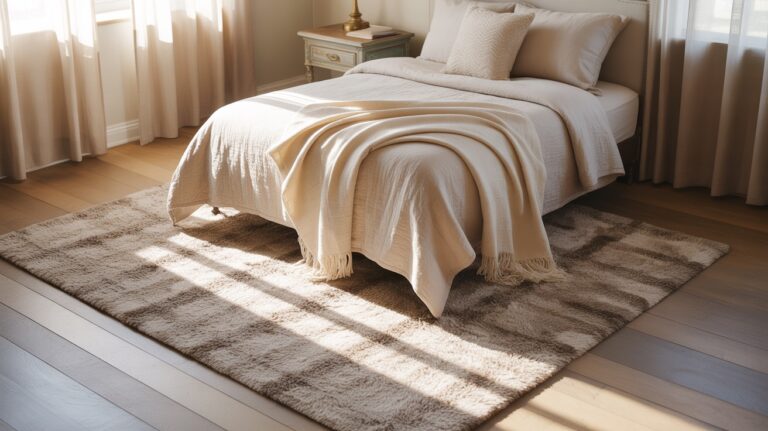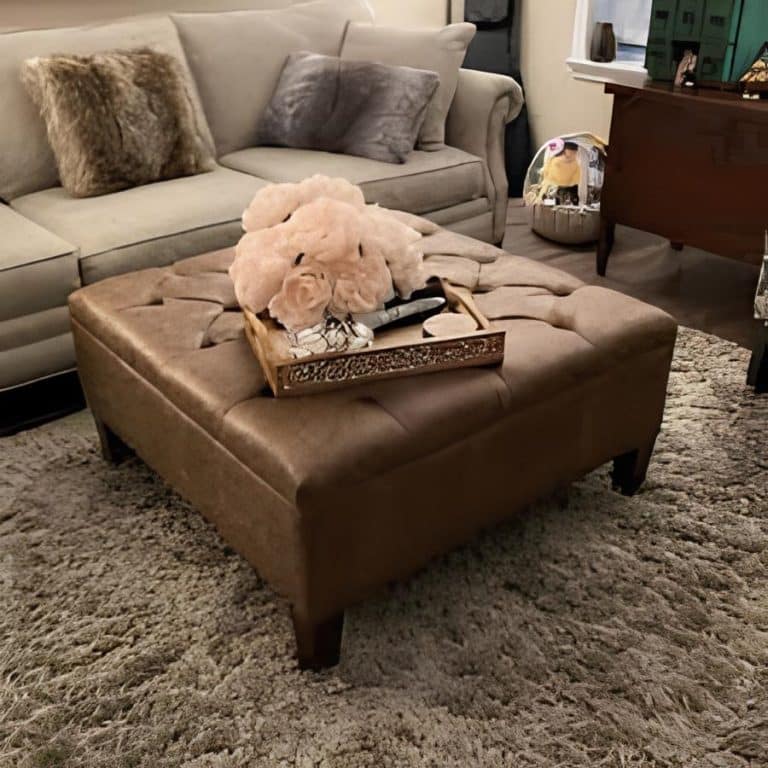Wallpapering Textured Walls: Easy Guide
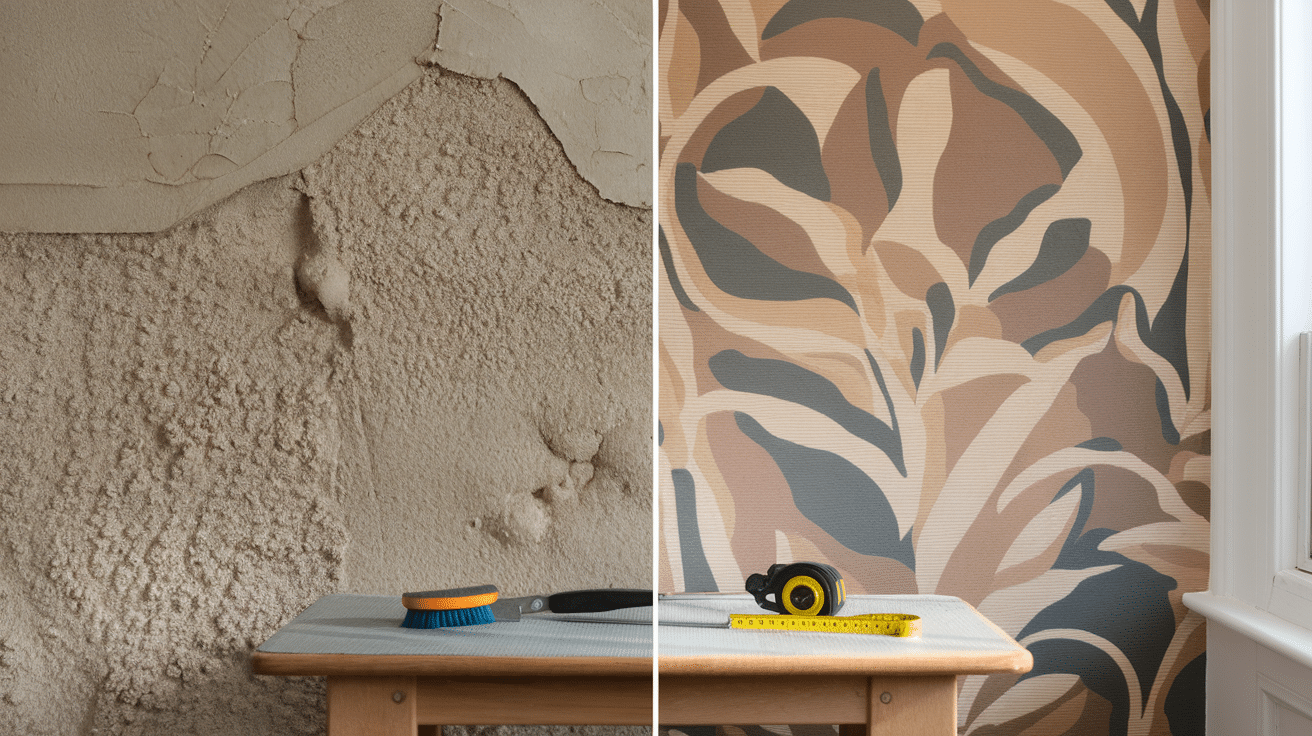
Textured walls can make you stop and wonder if wallpapering them is even possible?
These types of walls have uneven bumps and patterns that look so different from flat, smooth surfaces.
Many people struggle with this question, asking, “Can you wallpaper textured walls without ruining the finish or wasting hours of hard work?”
Before picking up a brush or roller, it helps to know what challenges textured walls bring and what makes them harder to handle.
We will be telling you about the right approach, useful tips, and common mistakes.
What Textured Walls Really Mean?
Think your walls are smooth? Think again! Most homes have some type of texture, even if it is subtle.
You have probably seen orange peel texture, those tiny bumps that resemble an orange peel.
Then there is knockdown, which has a flattened, rustic look, and the infamous popcorn texture that was huge in the ’80s (and still haunts many ceilings today).
Do not forget about stucco, with its rougher, more dramatic bumps.
Here is the thing: all these textures can mess with your wallpaper plans.
The bumps and ridges make it harder for wallpaper to adhere properly, and they can show through thin papers, creating an uneven, bumpy appearance that was not part of your design vision.
Can You Wallpaper Textured Walls?
The short answer? Yes, you can, but it requires some prep work, and smoother textures are your friend.
Light textures like orange peel can work with the right approach, while heavy popcorn or stucco will give you major headaches.
Here’s why texture matters: those bumps prevent wallpaper from making full contact, creating weak spots and bubbles.
Plus, textured surfaces make it nearly impossible to get clean, tight seams where strips meet, leaving obvious gaps that scream “amateur job.”
Step-by-Step Guide to Wallpapering Textured Walls
These steps will walk you through how to wallpaper textured walls:
Step 1: Clean and Prepare the Wall
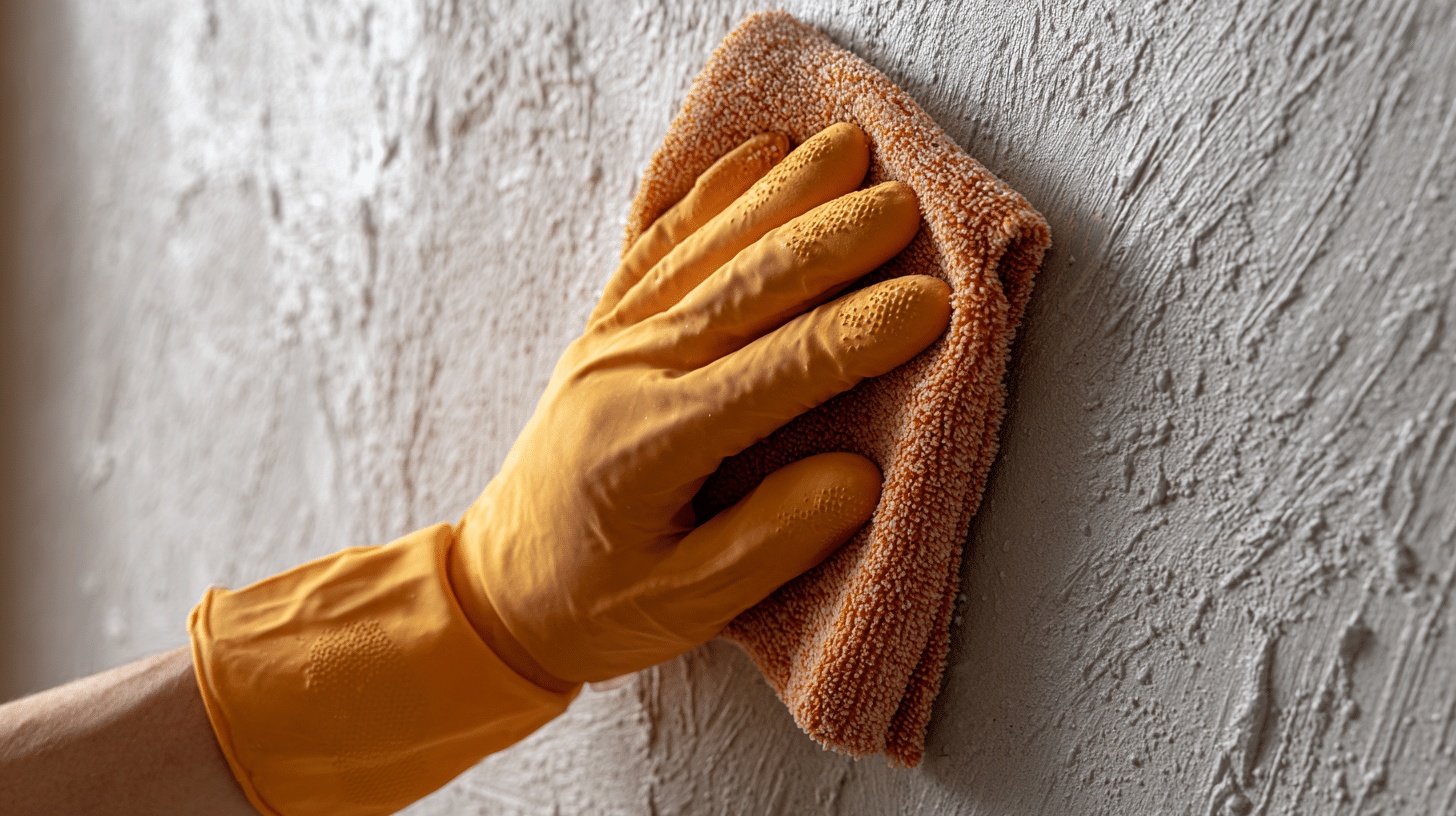
Wipe the wall with a damp cloth to remove any dust, dirt, or grease.
Look for cracks or holes and fill them with spackle or wall filler.
Use a putty knife to smooth it out and let it dry completely.
This makes the wall smoother and helps the wallpaper stick better without bumps or loose spots.
Step 2: Sand the Wall Smooth
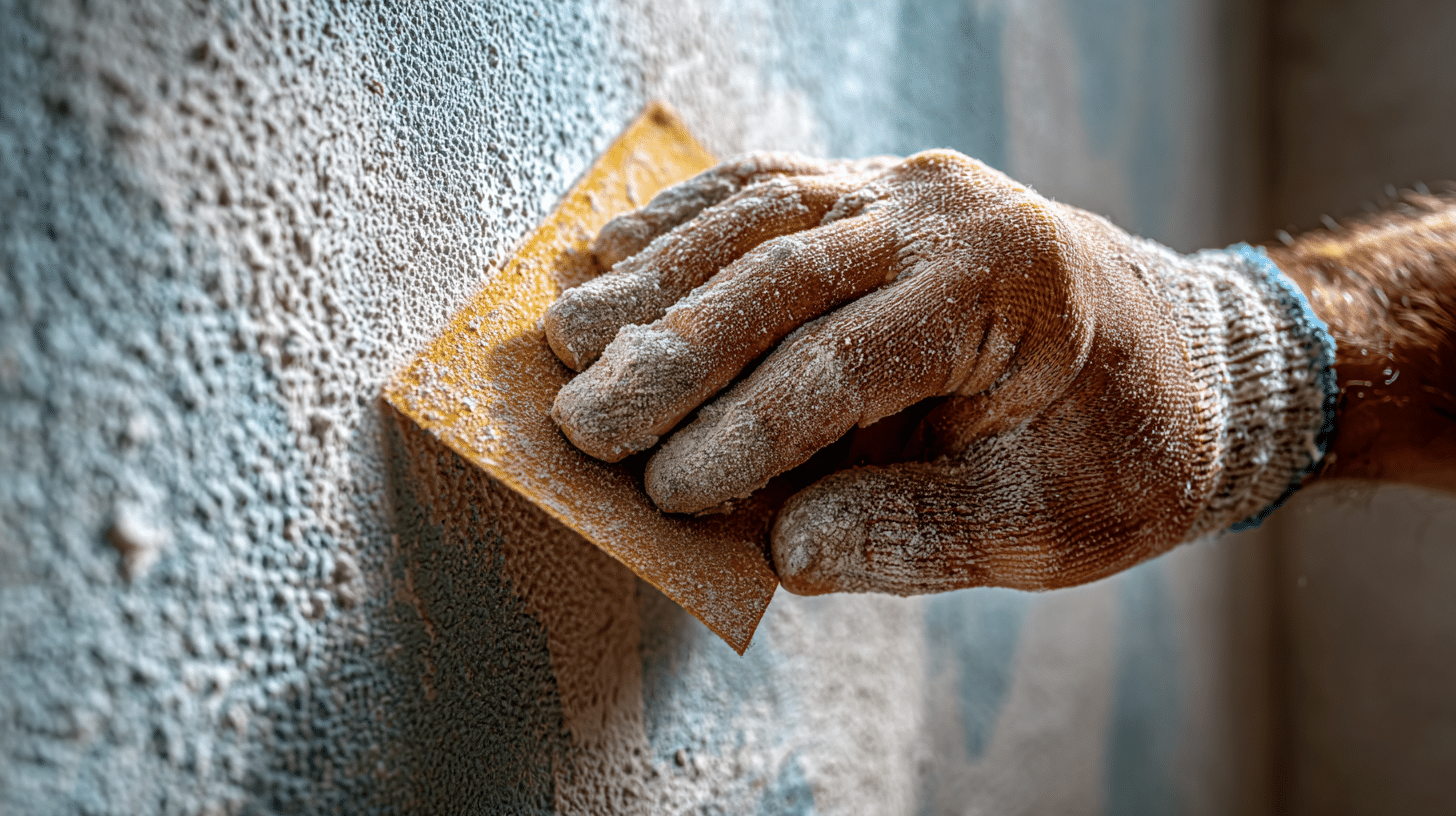
Once the filled areas are dry, gently sand the wall with fine sandpaper.
This helps smooth out rough spots and evens the surface.
Be careful not to press too hard.
A smoother wall will make the wallpaper go on more easily and look nicer when finished.
Always wipe away the dust after sanding to keep the surface clean.
Step 3: Pick the Right Wallpaper
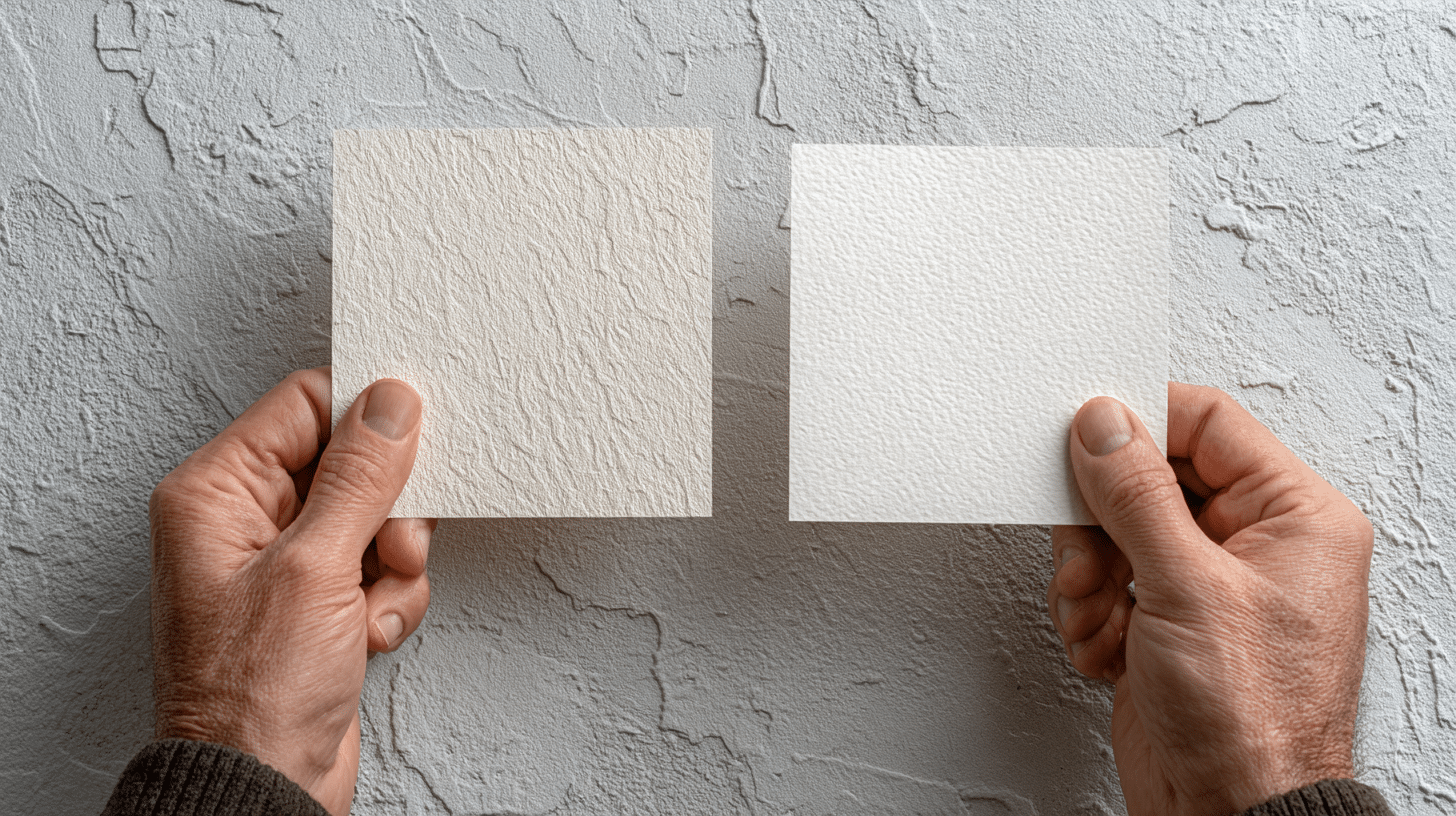
Choose a wallpaper that works well on textured walls.
Thick or vinyl wallpaper is a good choice because it is stronger and can hide small bumps.
These types stick better and last longer, even on uneven surfaces.
Try to avoid thin wallpaper, as it may not cover the wall texture properly or may peel off sooner.
Step 4: Measure, Cut, and Add Adhesive
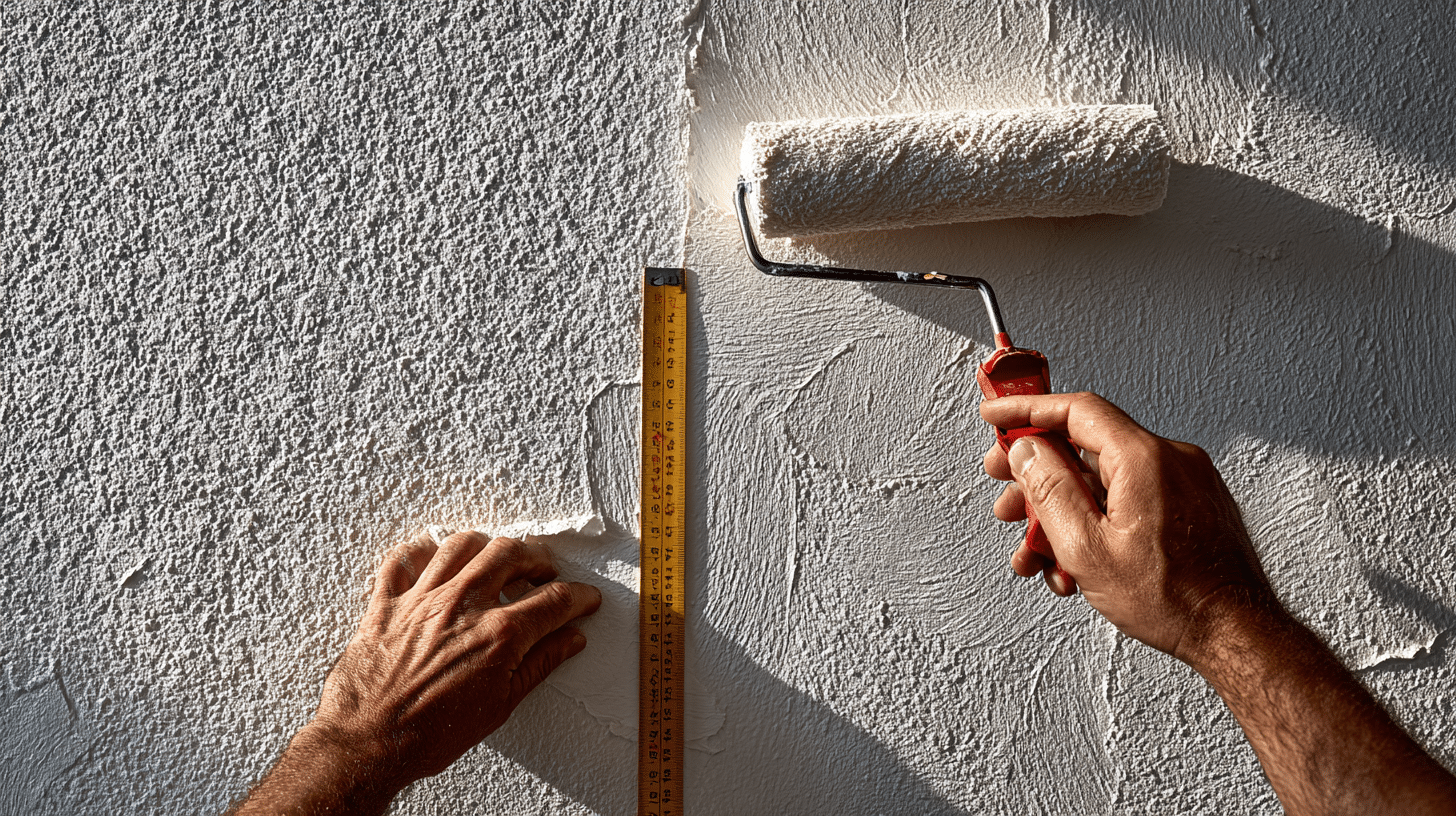
Measure your wall to know how much wallpaper you need.
Cut each piece with a little extra at the top and bottom for trimming.
Depending on the wallpaper type, you may need to add glue to the wall or the back of the wallpaper.
Use a roller or brush to spread the glue evenly with no dry spots.
Step 5: Hang and Finish the Wallpaper
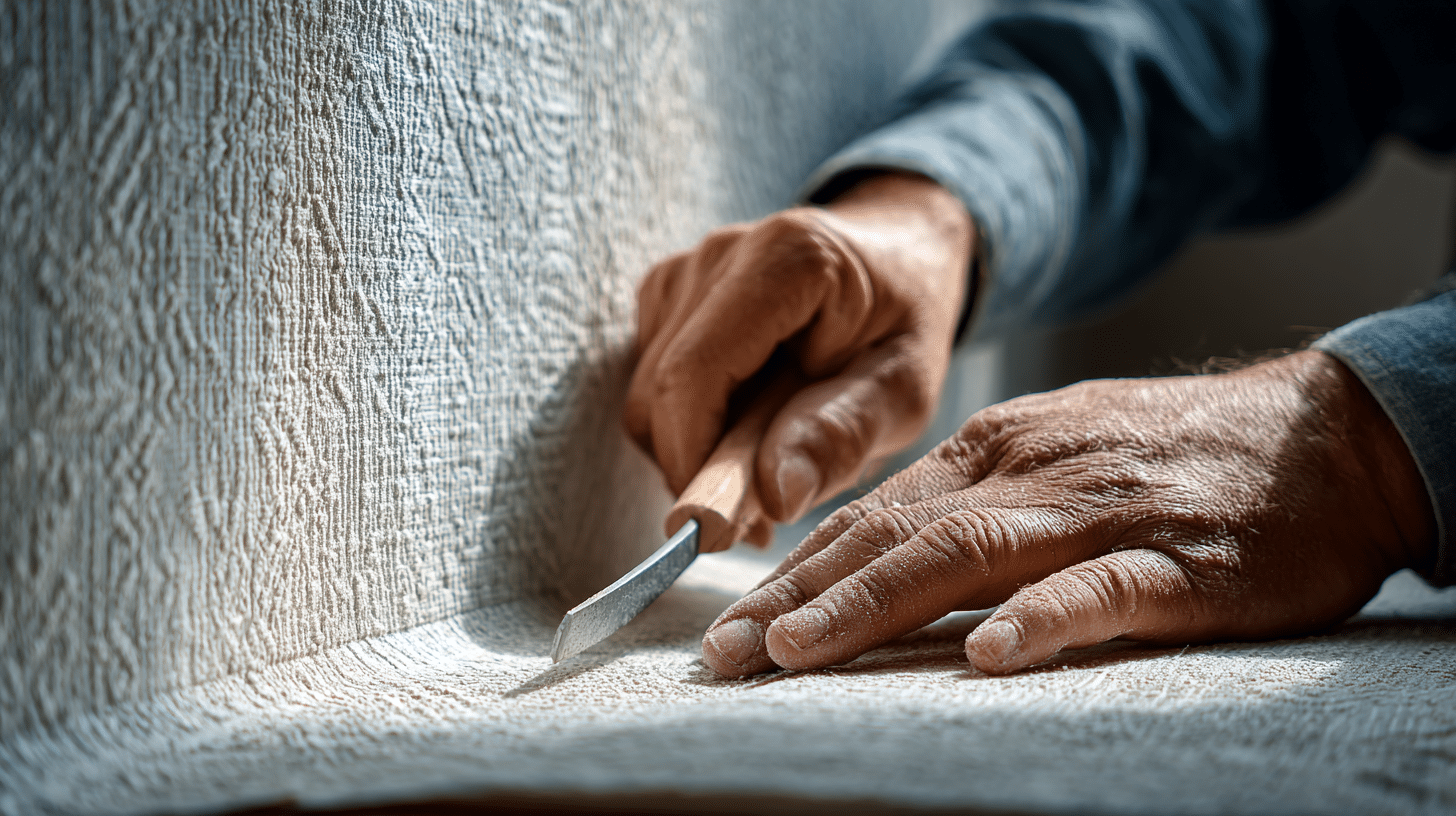
Start hanging the wallpaper from the top of the wall.
Press it gently onto the wall and smooth it with a tool or soft brush to remove air bubbles.
Work slowly, section by section.
Once it is up, trim the extra wallpaper around the edges and corners with a sharp knife.
This gives it a clean and neat look.
Troubleshooting Common Issues
Even with the best preparation, problems can sometimes arise when wallpapering textured walls.
Here is how to handle the most common issues:
| PROBLEM | QUICK FIX | PREVENTION TIPS |
|---|---|---|
| Air Bubbles | Use a smoothing tool to gently push bubbles toward edges, or lift wallpaper slightly to release trapped air. | Work slowly and smoothly as you go, using proper technique from the center outward. |
| Misaligned Seams | Carefully peel back the wallpaper and reposition while the adhesive is still wet and workable. | Take time to measure and mark guidelines before hanging each strip. |
| Wallpaper Peeling | Check if you are using the right adhesive for textured walls, then reapply glue and press back into place. | Use heavy-duty adhesive designed for textured surfaces, and prime walls first. |
Pro Tip: Keep a damp cloth handy to wipe excess adhesive from your hands and tools. It will prevent you from accidentally getting glue on the wallpaper’s surface.
Maintenance & Tips for Longevity
Keep your textured wall wallpaper looking fresh and lasting longer with these simple maintenance steps:
- Control humidity levels: Use proper ventilation to prevent moisture buildup that can cause peeling and bubbling
- Clean with care: Use only a damp cloth for cleaning and avoid harsh chemicals that can damage the wallpaper
- Check seams yearly: Do annual inspections and fix any minor lifting immediately before it becomes a bigger problem
- Address damage quickly: Do not let small tears or loose edges sit; repair them right away to prevent spreading
- Maintain room temperature: Avoid extreme temperature changes that can cause wallpaper to expand and contract
Taking care of your wallpaper doesn’t have to be complicated; a little attention goes a long way toward keeping your textured walls looking beautiful for years to come.
Wrapping It Up
So now in the end, you know about the mystery of wallpapering textured walls.
The truth is that you can, provided you prepare carefully, stay patient, and use the right method.
The bumps and patterns may look tricky, but they can be managed with simple steps that turn frustration into success and give walls a fresh new life.
If you have ever done this with textured walls or faced challenges that left you questioning the results, don’t hesitate to share.
Tell us about it in the comments below!
Frequently Asked Questions (FAQs)
Can I Use Any Type of Wallpaper for Textured Walls?
It is best to use thicker, durable wallpapers like vinyl for textured surfaces.
How Long Does It Take for Wallpaper to Dry?
Drying time can vary, but it typically takes 24 – 48 hours for the wallpaper to set completely.
Can I Wallpaper Over Rough Textures Like Popcorn Ceilings?
Yes, but you may need extra preparation and a thicker wallpaper for the best results.

